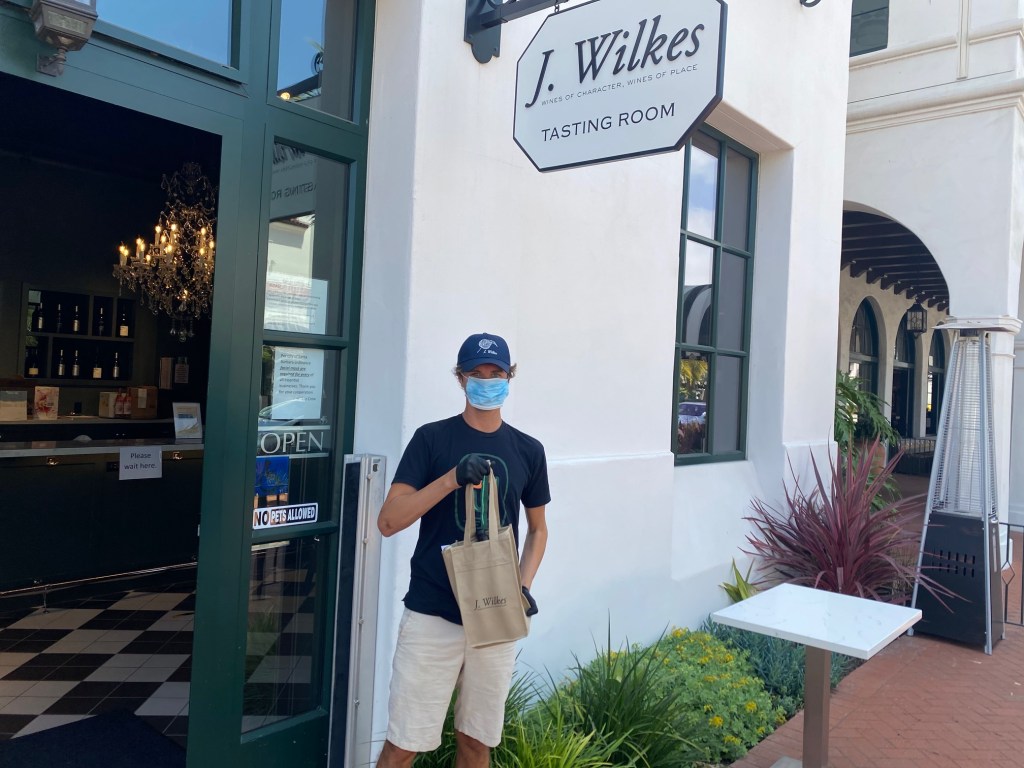Like small companies everywhere, Santa Barbara County’s wineries employ highly individualized business models.
Many rely primarily on the direct-to-consumer, or DTC, formula, in which business flows through the tasting room and wine club. Some are more invested in selling wholesale to bottle shops and grocery stores (also known as the “off-premise” market), and others focus predominantly on restaurant, or “on-premise,” sales. Most, however, depend on some combination of all three.
Thanks to the coronavirus pandemic’s wide-ranging shutdown effects, the specific breakdown almost doesn’t matter. The traditional tasting room and restaurant models have been decimated, and while retail is up, the bulk of that buying is lower-priced, mass-produced booze — not the hand-crafted wines that our wineries barely make any money on when selling at $35 a bottle.
Yet, like vintners across the world, most of the county’s winemakers scrambled to boost revenues through new means: big online discounts; free, sometimes even personal, delivery; curbside pickup; and the now ubiquitous virtual tasting, of which this author alone has participated in more than a dozen so far. That’s stopped some of the bleeding, but it’s not gonna work in the long term.
“Everybody’s wheeling and dealing to stimulate cash flow, so margins are down,” said Bob Lindquist of Lindquist Family Wines. Stephen Janes, the general manager at Pence Vineyards, echoed many of his colleagues when he explained, “We seem to be working much harder for less revenue.”
Last week, the state Alcoholic Beverage Control allowed tasting rooms to open so long as they incorporate food service, and the City of Santa Barbara had followed suit by Friday. In other parts of the county, amid a bit of confusion about what was allowed and what wasn’t, the County of Santa Barbara enacted a rule on Monday, May 25, to allow tastings rooms in the unincorporated areas to do the same.
A number have since opened, with the requisite slew of public health protection measures. “We are thrilled to finally have a crack in the door to opening,” said Alison Laslett, head of the Santa Barbara Vintners. “Vintners are so creative; I have confidence in them to find ways to feed their customers, offer them fantastic local wines, and do it all safely. We are so excited to welcome people back.”
Jamie Slone Wines in downtown Santa Barbara was one of the first to reopen, doing so on Friday, May 22. “It’s been fantastic!” said Slone, who is serving paired flights of Buena Onda empanadas to satisfy the food mandate. “We are thrilled to help lead the way for wineries in Santa Barbara.” Guests must maintain a six-foot distance and wear masks until seated. “We are cleaning machines!” said Slone, who recommends reservations although they are not required.
To gauge what these past two months of closed tasting rooms have meant for Santa Barbara vintners, the Independent sent a simple survey around the industry. More than 60 wineries responded.
There is good news: for 22 percent, business is either normal or even up, while 45 percent said business is slow, but not as bad as expected. That leaves more than 31 percent who said business is way down. About three-quarters of respondents said that their brands will definitely survive this crisis, with the remaining 25 percent expressing cautious optimism. No one even clicked the “probably will close” box.
“I’m uncertain if we’ll be able to sustain the level of DTC sales through the summer months and what size of a hit we’ll have taken overall by the time harvest rolls around,” worried veteran vintner Rick Longoria, who has seen a rise in online sales, but they often come with deep discounts and reduced shipping costs. “I’m planning on making less wine due to the reduced cash flow and lower demand.”
The latter point — that winemakers won’t be buying as much fruit this year, especially after substantial harvests in 2018 and 2019 — is starting to freak out grape growers, who fear the prices could plummet to less than half of normal. Countless other questions about employment, leasing, and much more linger for Santa Barbara County winemakers at this time, who contribute more than $1.7 billion to the regional economy, according to a 2016 report.
That leaves most of them in the same boat as Sonja Magdevski at Casa Dumetz. “I am scrapper and hustler and I will figure it out,” she said. “I don’t have an alternate plan, so this has to work regardless. Creativity and resilience are the key right now.”
The Independent’s Winery Survey
At the Santa Barbara Independent, our staff continues to cover every aspect of the COVID-19 pandemic. Support the important work we do by making a direct contribution.

